| In the 1840’s, Full skirts were supported by a vast array of petticoats. These petticoats were made of horsehair, or stiffened with cane and padding.
The natural waist could be slightly longer than natural, with points in front and behind. Most trimmings were applied in a manner that was wide at the shoulder, narrowing at the waist and then widening again at the hem of the skirt. This would accentuate the tightly laced waistline.
|
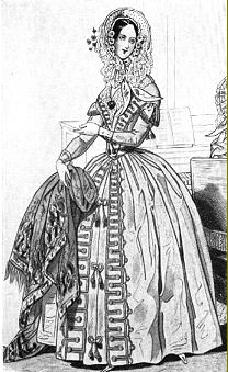
1840 day dress
|
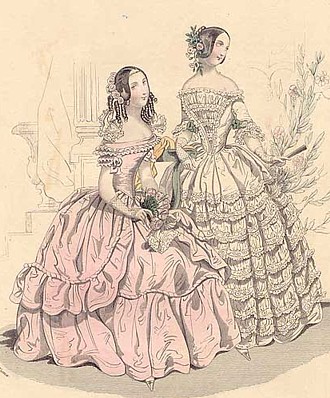
1841 – La Mode Illustre |
| The bodice shoulder line ended well below the natural shoulder, often pinning the arm of the wearer down. The sleeves were narrow for day dresses. |
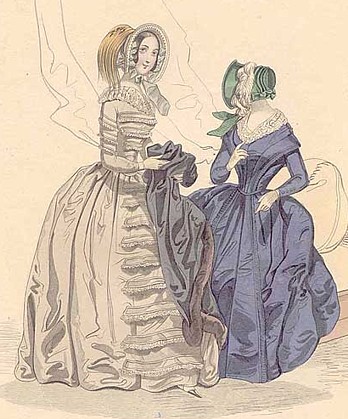
1841 La Mode Illustre, day dresses.
|
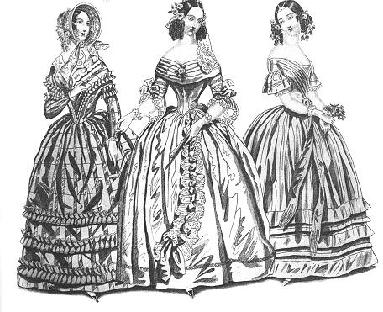
1841 fashion plate.
|
| Evening bodices were low off the shoulder, often covered with folds of fabric or a bertha. |
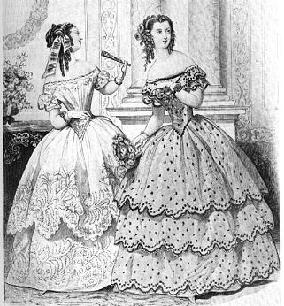
1843 Evening dresses |
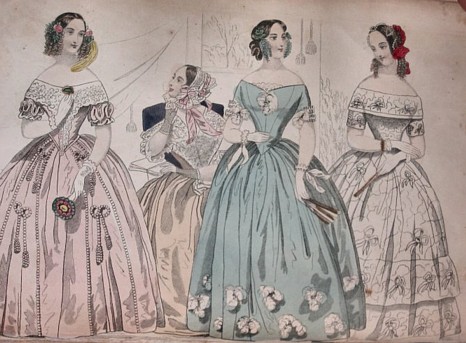
1842 Godeys |
| The overall look of the dresses did not change much during this period. The sleeves started to become wider in the 1850’s. The skirts expanded in size as more and more petticoats were worn. Added flounces on the skirt would help create a wider look. |
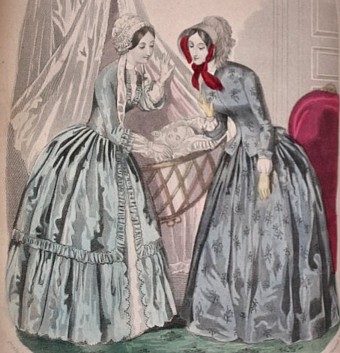
1848 Godey – Morning Dresses. |
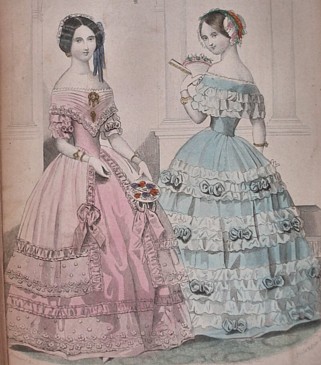
1848 Godey – Evening Dresses. |
| Daytime necklines could be more open than those of later years. Often a plunging “V” neckline would be filled in over the bust by a small chimisette. |
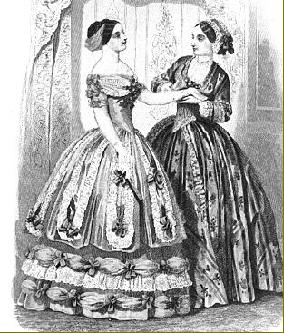
1850 evening dresses.< |
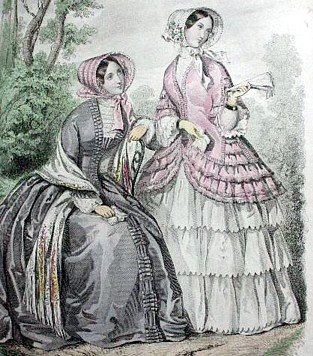
1850 Grahams – day dresses |
|
| The style for flounces on the dresses begins to be very popular, with more and more flounces add all the time. Dress fabrics were milled especially for the flounces, with colors and patterns designed to be cut into strips. |
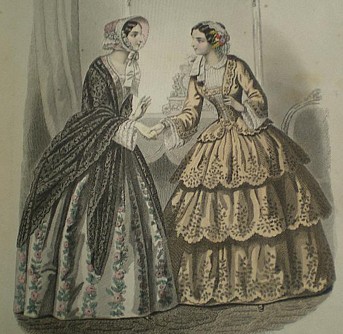
1851 Journal des Demoiselles – day dresses. |
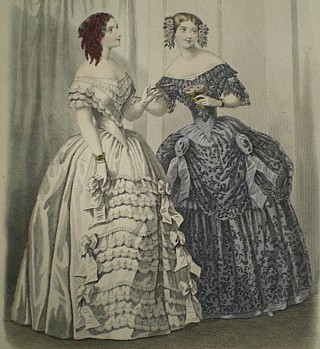
Early 1850s Journal de Demoiselles – evening dresses. |
| I should mention that the French during this period were wearing bodices that fit smoothly to the body. The English tended to soften the bodices with folds and gathers of fabric over the bust, known as the “fan” bodice. |
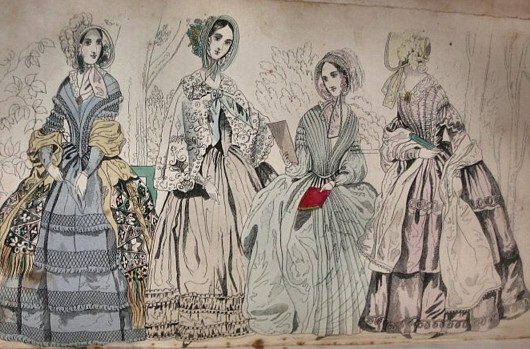
1842 Godey.
|












